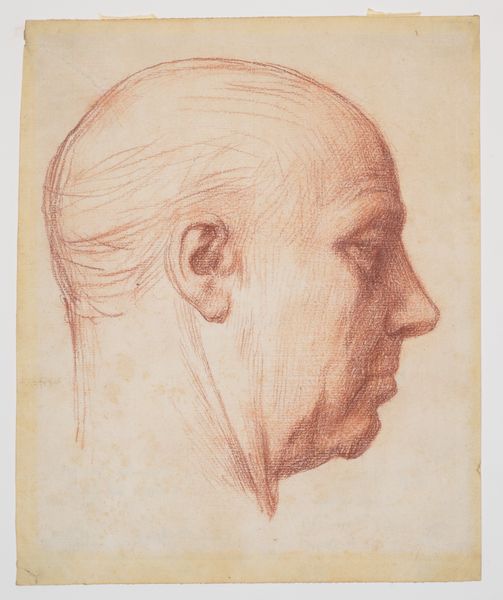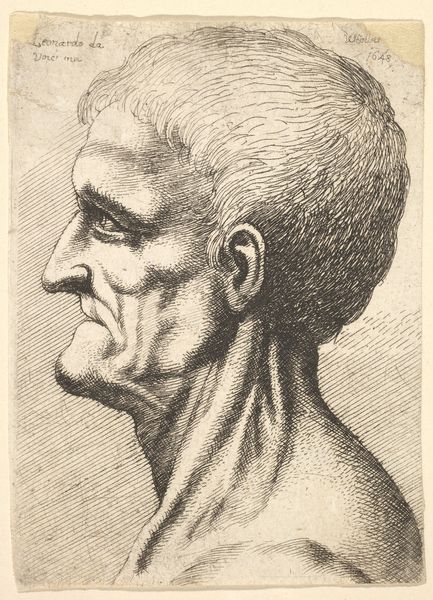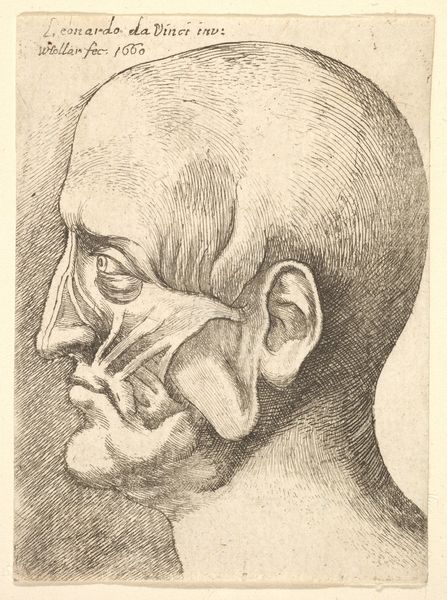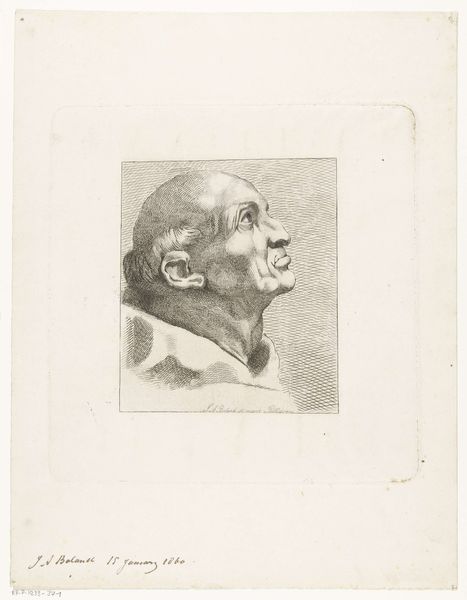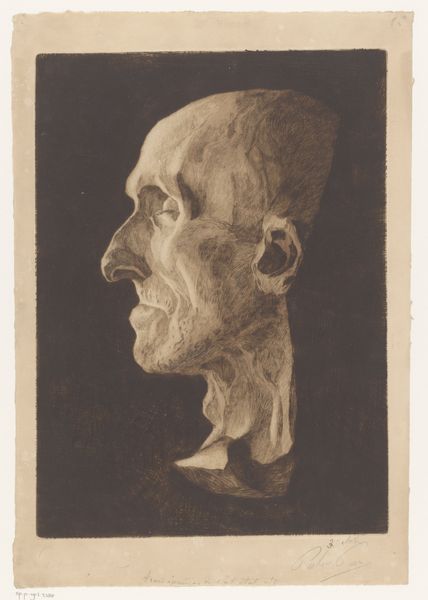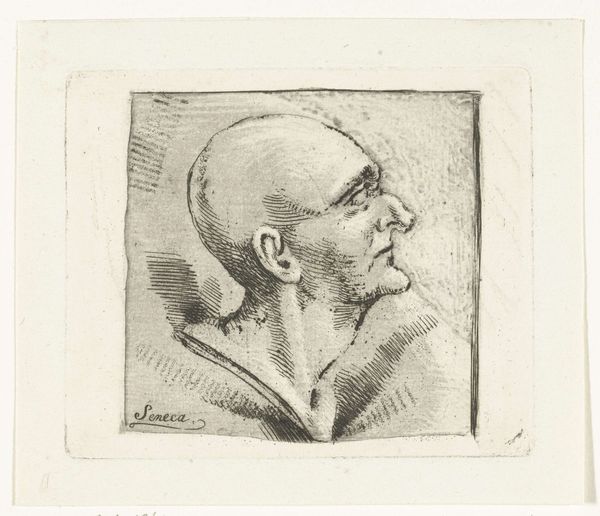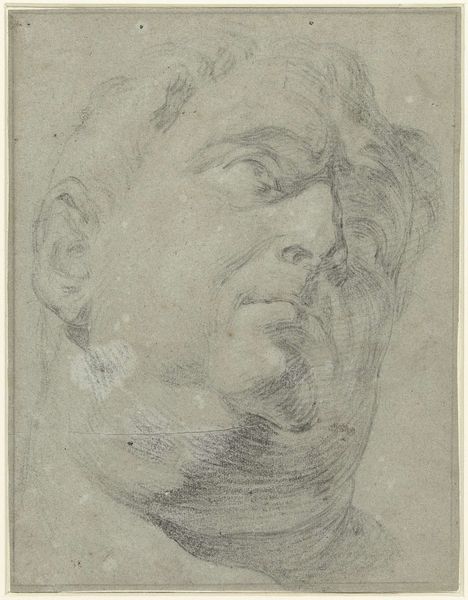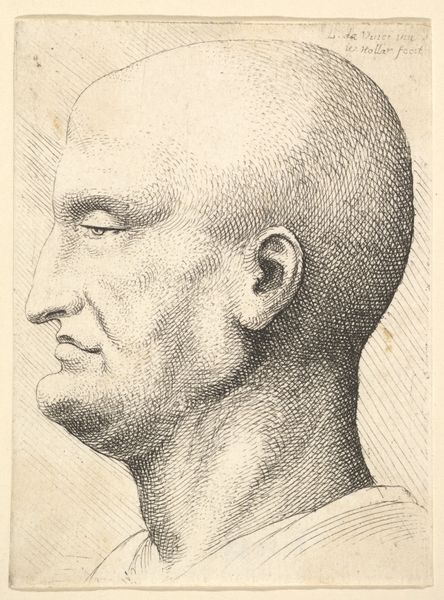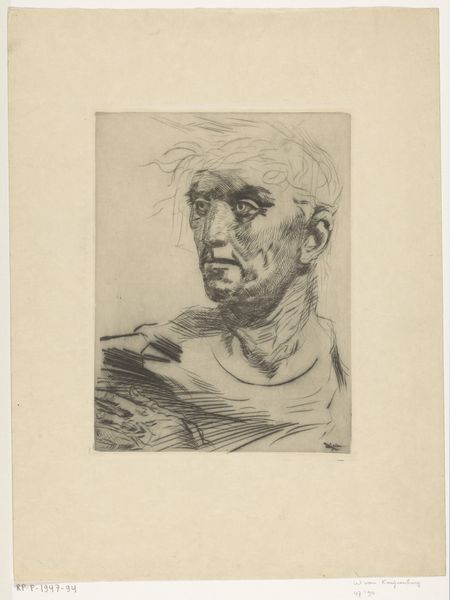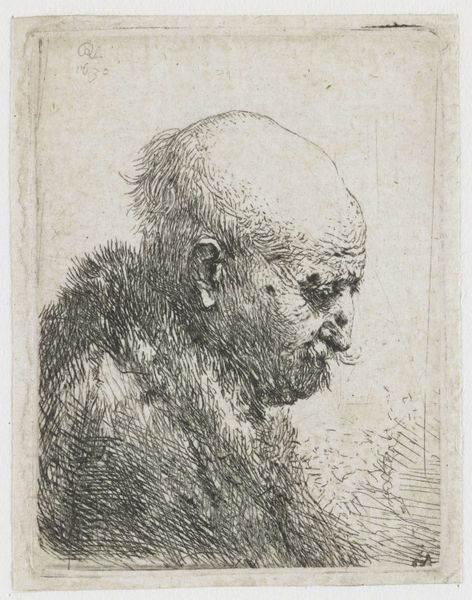
Grotesque old man with flattened nose in profile to left 1644 - 1652
0:00
0:00
drawing, print, etching, engraving
#
portrait
#
pencil drawn
#
drawing
#
baroque
# print
#
etching
#
caricature
#
pencil drawing
#
portrait drawing
#
engraving
Dimensions: Plate: 2 9/16 × 1 7/8 in. (6.5 × 4.8 cm)
Copyright: Public Domain
Curator: Wenceslaus Hollar, a prominent figure in 17th-century printmaking, created this etching titled "Grotesque old man with flattened nose in profile to left" sometime between 1644 and 1652. Editor: It's undeniably striking! The texture is so palpable; I can almost feel the wrinkles and the roughness of his skin just by looking at the cross-hatching. It projects this unexpected mix of vulnerability and... something almost unsettling. Curator: Unsettling is a key word here. Hollar was working within a tradition of caricature that exploded in the Baroque era, using distortions to make larger points about power, class, and moral failings. It was quite common for the art market in Europe. Editor: Exactly. Think about what "grotesque" meant then – it’s not just about ugliness, but a commentary on societal decay, almost a visual critique of hierarchies that oppress and deform individuals. It certainly holds meaning to this day. Curator: Well, in this case it references, perhaps problematically to our eyes, contemporary "physiognomy" –the pseudoscientific theory linking outer appearance to inner character. It wasn't necessarily seen as a "critique" per se, but more as an observation of supposed inherent natures, sometimes influenced by political biases of the time. Editor: Even framed as observation, such classifications have always been used to justify marginalization. Seeing how easily "grotesque" became synonymous with otherness throughout history, how can we view this outside the impact such labeling had on the individual experience of entire communities and races, influencing oppressive laws? Curator: It prompts important dialogues on art's complex relation to its historical contexts and receptions. And though the original intentions might elude us, the impact is palpable in how art reflects evolving sensibilities of social hierarchies. Editor: Absolutely. Engaging with it critically, acknowledging those power dynamics, is how we ensure art like this prompts much-needed re-evaluations of how we perceive difference. Curator: I agree, the etching offers valuable material to investigate shifting societal norms and the problematic nature of visual stereotypes from an historical point of view. Editor: Definitely food for thought—it makes you think about the gazes we inherit, the bodies deemed acceptable, and who gets to decide.
Comments
No comments
Be the first to comment and join the conversation on the ultimate creative platform.
